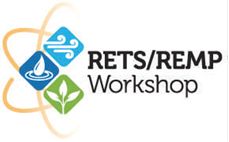
2014 RETS-REMP & Groundwater Workshop, June 23-27, 2014, Westin
Savannah, Savannah, GA
Sponsored by Nuclear Energy Institute
|
|
|
Trend Analysis of 1999 and 2000 U.S. Nuclear Power Plant Gaseous and Liquid Effluent Releases The current US electrical energy generation crisis has placed a national spotlight on the urgent need to construct new plants. The potential adverse environmental impacts of the expansion of fossil plants has created a renewed interest in the low effluent releases afforded by nuclear power plants. This paper provides an analysis of trends of the 1999 and 2000 liquid and gaseous effluents from U.S. nuclear power plants. In the United States, the US Nuclear Regulatory Commission (US NRC) regulates nuclear power plant effluent emissions. These emissions must meet certain standards set by both the US NRC and the US Environmental Protection Agency (US EPA) to keep public doses As Low As Reasonable Achievable (ALARA). This paper demonstrates that in 1999 and 2000, US nuclear power plant effluents were well below regulatory limits. The North American Technical Center (NATC) at the Nuclear, Plasma and Radiological Engineering Department of the University of Illinois at Urbana-Champaign has developed the US effluent database since 1994. The authors believe that an accurate and timely US effluent database is important to assist government and utility energy planners in the selection and siting of new electrical generation plants in the U.S. Clearly the low environmental impact of nuclear power operations for the past 30 years is a key advantage of nuclear power plants versus fossil power plants. |
|
North American Technical Center Contact Webmaster |